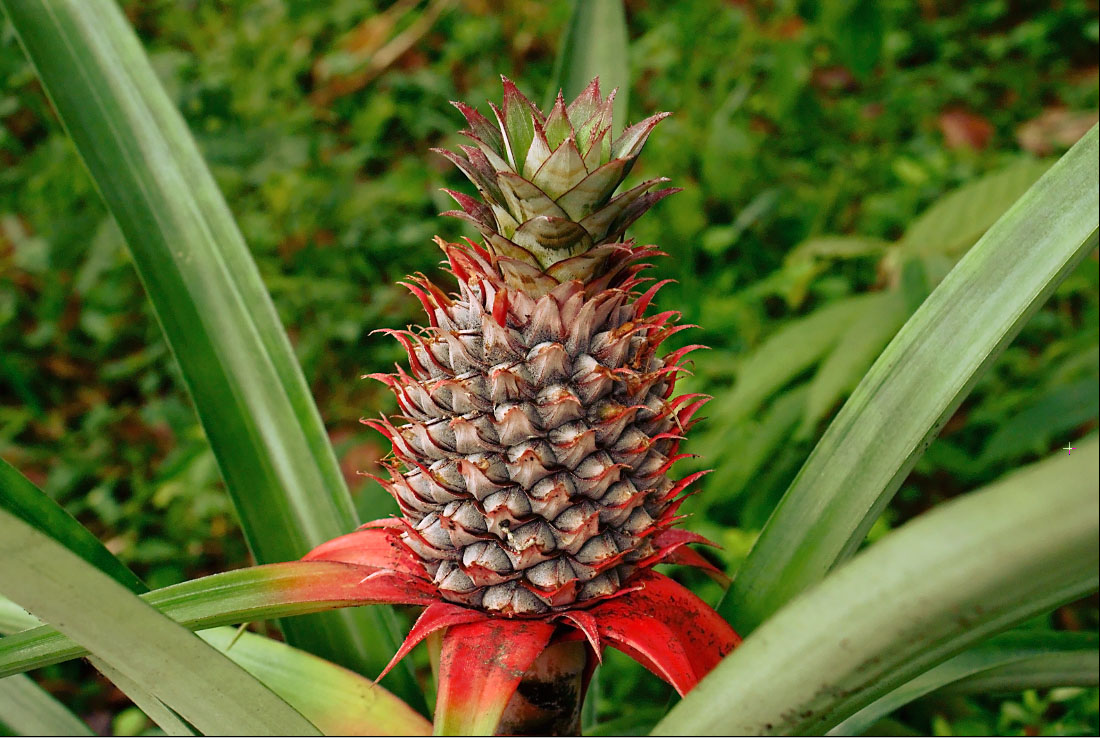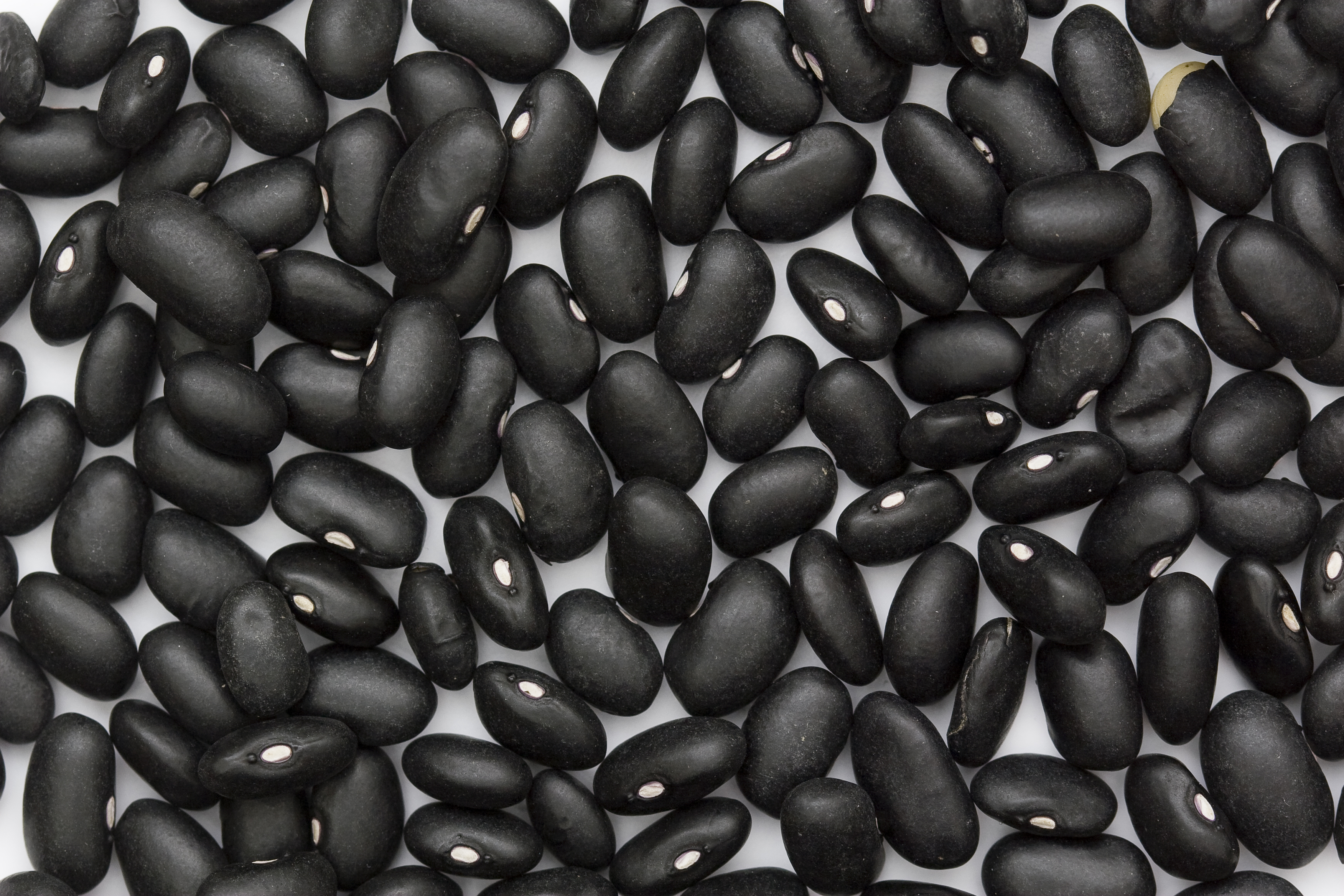Pineapple vs. Black Beans
Nutrition comparison of Pineapple and Black Beans
Ever wonder how your favorite foods stack up against each other in terms of nutrition?
We compared the nutritional contents of
pineapple
versus
black beans
(100g each)
below using 2020 USDA and NIH data[1].
For a quick recap of significant nutrients and differences in pineapple and black beans:
- Black bean has 41.8 times less sugar than pineapple.
- Black bean has more riboflavin and folate, however, pineapple contains more Vitamin B6.
- Black bean has signficantly more iron than pineapple.
- Black bean is an excellent source of dietary fiber and potassium.
- Pineapple is an excellent source of Vitamin C.
USDA sources for nutritional information: Pineapple (Pineapple, raw, all varieties) and Black Beans (Beans, black turtle, mature seeds, canned) . Have a correction or suggestions? Shoot us an email.
Calories and Carbs
calories
Pineapple has 45% less calories than black bean - pineapple has 50 calories per 100 grams and black bean has 91 calories.
For macronutrient ratios, pineapple is much lighter in protein, much heavier in carbs and similar to black beans for fat. Pineapple has a macronutrient ratio of 4:94:2 and for black beans, 26:71:3 for protein, carbohydrates and fat from calories.
Macro Ratios from Calories:
| Pineapple | Black Beans | |
|---|---|---|
| Protein | 4% | 26% |
| Carbohydrates | 94% | 71% |
| Fat | 2% | 3% |
| Alcohol | ~ | ~ |
carbohydrates
Pineapple and black beans contain similar amounts of carbs - pineapple has 13.1g of total carbs per 100 grams and black bean has 16.6g of carbohydrates.
dietary fiber
Black bean is an excellent source of dietary fiber and it has 393% more dietary fiber than pineapple - pineapple has 1.4g of dietary fiber per 100 grams and black bean has 6.9g of dietary fiber.
sugar
Black bean has 41.8 times less sugar than pineapple - pineapple has 9.9g of sugar per 100 grams and black bean has 0.23g of sugar.
Protein
protein
Black bean has 10 times more protein than pineapple - pineapple has 0.54g of protein per 100 grams and black bean has 6g of protein.
Fat
saturated fat
Both pineapple and black beans are low in saturated fat - pineapple has 0.01g of saturated fat per 100 grams and black bean has 0.08g of saturated fat.
Vitamins
Vitamin C
Pineapple is an excellent source of Vitamin C and it has 16 times more Vitamin C than black bean - pineapple has 47.8mg of Vitamin C per 100 grams and black bean has 2.7mg of Vitamin C.
Vitamin A
Pineapple and black beans contain similar amounts of Vitamin A - pineapple has 3ug of Vitamin A per 100 grams and black bean does not contain significant amounts.
Vitamin E
Pineapple and black beans contain similar amounts of Vitamin E - pineapple has 0.02mg of Vitamin E per 100 grams and black bean has 0.62mg of Vitamin E.
Vitamin K
Pineapple and black beans contain similar amounts of Vitamin K - pineapple has 0.7ug of Vitamin K per 100 grams and black bean has 2.3ug of Vitamin K.
The B Vitamins
Black bean has more riboflavin and folate, however, pineapple contains more Vitamin B6. Both pineapple and black beans contain significant amounts of thiamin, niacin and pantothenic acid.
| Pineapple | Black Beans | |
|---|---|---|
| Thiamin | 0.079 MG | 0.14 MG |
| Riboflavin | 0.032 MG | 0.12 MG |
| Niacin | 0.5 MG | 0.62 MG |
| Pantothenic acid | 0.213 MG | 0.184 MG |
| Vitamin B6 | 0.112 MG | 0.055 MG |
| Folate | 18 UG | 61 UG |
Minerals
calcium
Black bean has 169% more calcium than pineapple - pineapple has 13mg of calcium per 100 grams and black bean has 35mg of calcium.
iron
Black bean has signficantly more iron than pineapple - pineapple has 0.29mg of iron per 100 grams and black bean has 1.9mg of iron.
potassium
Black bean is an excellent source of potassium and it has 183% more potassium than pineapple - pineapple has 109mg of potassium per 100 grams and black bean has 308mg of potassium.
Omega-3 and Omega-6
omega 3s
For omega-3 fatty acids, black bean has more alpha linoleic acid (ALA) than pineapple per 100 grams.
| Pineapple | Black Beans | |
|---|---|---|
| alpha linoleic acid | 0.017 G | 0.057 G |
| Total | 0.017 G | 0.057 G |
omega 6s
Comparing omega-6 fatty acids, black bean has more linoleic acid than pineapple per 100 grams.
| Pineapple | Black Beans | |
|---|---|---|
| linoleic acid | 0.023 G | 0.068 G |
| Total | 0.023 G | 0.068 G |
Customize your serving size
The comparison below is by common portions, e.g. cups, packages. You can also see a more concrete comparison by weight at equal weight (by grams) comparison.
Note: The specific food items compared are: Pineapple (Pineapple, raw, all varieties) and Black Beans (Beans, black turtle, mature seeds, canned) .
Pineapple g
()
|
Daily Values (%) |
Black Beans g
()
|
|||||
|---|---|---|---|---|---|---|---|
| KCAL % |
|
5% | calories | 5% |
|
KCAL % | |
| G % |
|
5% | carbohydrates | 5% |
|
G % | |
| G % |
|
5% | dietary fiber | 5% |
|
G % | |
| G | 5% | sugar | 5% | G | |||
| G % |
|
5% | total fat | 5% |
|
G % | |
| G % |
|
5% | saturated fat | 5% |
|
G % | |
| G | 5% | monounsaturated fat | 5% | G | |||
| G | 5% | polyunsaturated fat | 5% | G | |||
| G | 5% | trans fat | 5% | G | |||
| MG | 5% | cholesterol | 5% | MG | |||
| MG % |
|
5% | sodium | 5% |
|
MG % | |
| 5% | Vitamins and Minerals | 5% | |||||
| UG % |
|
5% | Vitamin A | 5% |
|
UG % | |
| MG % |
|
5% | Vitamin C | 5% |
|
MG % | |
| IU % |
|
5% | Vitamin D | 5% |
|
IU % | |
| MG % |
|
5% | calcium | 5% |
|
MG % | |
| MG % |
|
5% | iron | 5% |
|
MG % | |
| MG % |
|
5% | magnesium | 5% |
|
MG % | |
| MG % |
|
5% | potassium | 5% |
|
MG % | |
| MG % |
|
5% | thiamin (Vit B1) | 5% |
|
MG % | |
| MG % |
|
5% | riboflavin (Vit B2) | 5% |
|
MG % | |
| MG % |
|
5% | niacin (Vit B3) | 5% |
|
MG % | |
| MG % |
|
5% | Vitamin B6 | 5% |
|
MG % | |
| MG % |
|
5% | pantothenic acid (Vit B5) | 5% |
|
MG % | |
| UG % |
|
5% | folate (Vit B9) | 5% |
|
UG % | |
| UG % |
|
5% | Vitamin B12 | 5% |
|
UG % | |
| MG % |
|
5% | Vitamin E | 5% |
|
MG % | |
| UG % |
|
5% | Vitamin K | 5% |
|
UG % | |
| G % |
|
5% | protein | 5% |
|
G % | |
| UG % |
|
5% | biotin (Vit B7) | 5% |
|
UG % | |
| MG % |
|
5% | choline | 5% |
|
MG % | |
| MG % |
|
5% | chlorine | 5% |
|
MG % | |
| UG % |
|
5% | chromium | 5% |
|
UG % | |
| MG % |
|
5% | copper | 5% |
|
MG % | |
| UG % |
|
5% | fluoride | 5% |
|
UG % | |
| UG % |
|
5% | iodine | 5% |
|
UG % | |
| MG % |
|
5% | manganese | 5% |
|
MG % | |
| UG % |
|
5% | molybdenum | 5% |
|
UG % | |
| MG % |
|
5% | phosphorus | 5% |
|
MG % | |
| UG % |
|
5% | selenium | 5% |
|
UG % | |
| MG % |
|
5% | zinc | 5% |
|
MG % | |
| G | 5% | Water | 5% | G | |||
| G | 5% | Starch | 5% | G | |||
| G | 5% | Alcohol | 5% | G | |||
FAQ
Does pineapple or black beans contain more calories in 100 grams?Pineapple has 50% less calories than black bean - pineapple has 50 calories in 100g and black bean has 91 calories.
Does pineapple or black beans have more carbohydrates?
By weight, pineapple and black beans contain similar amounts of carbs - pineapple has 13.1g of carbs for 100g and black bean has 16.6g of carbohydrates.
Does pineapple or black beans contain more potassium?
Black bean is a rich source of potassium and it has 180% more potassium than pineapple - pineapple has 109mg of potassium in 100 grams and black bean has 308mg of potassium.

